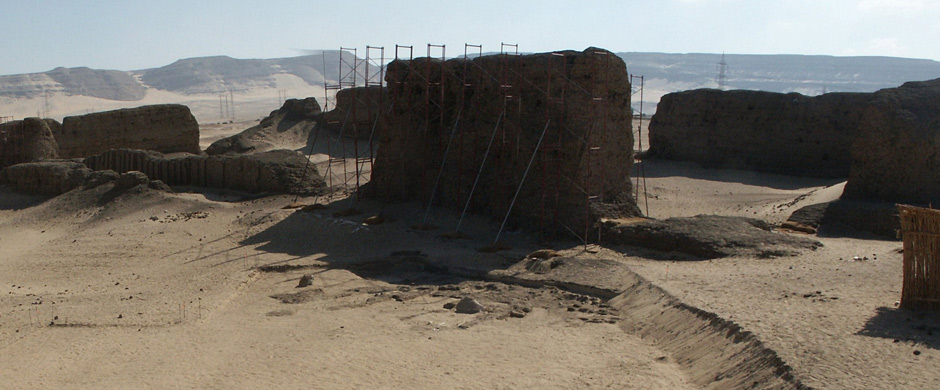 | In the Field
| In the Field

Current IFA Projects at Abydos
Early Royal Monuments
One of the most important initiatives in the Institute of Fine Arts research program at
Abydos is the systematic investigation of one of the earliest and most important phases
in the site’s long history. Egypt’s earliest kings (1st and 2nd Dynasties, ca. 3050-2650
BCE) built their tombs at a part of Abydos located far into the desert today called Umm
el-Qa’ab. A series of much more mysterious early royal monuments were constructed on
the desert edge overlooking the ancient town. The Institute’s excavations have revealed
that these buildings were integral components of the early royal funerary complex
and represent the nascence of royal monumental architectural expression. Each king constructed a remote underground tomb at Umm el-Qa’ab and a monumental ritual precinct, called a funerary cult enclosure, near the town. Only one of these structures
is still standing today, although the remains of others have been revealed through
excavation. The Institute’s work has much expanded our knowledge of these enclosures and how the early kings appear to have used them to express and define their royal power
at the beginning of Egyptian history.
Each royal monument consisted of a ritual precinct open to the sky enclosed by massive
mudbrick walls. The Institute’s excavations have resulted in the discovery of the earliest
royal enclosures yet known, dating to the reign of king Aha at the beginning of the 1st
Dynasty (ca. 3050 BCE). The Institute’s work has also revealed important aspects of
how these structures were used as the setting for ritual. Most surprisingly, it appears
that these important royal monuments appear to have been deliberately, even ritually
demolished and symbolically buried after only a short period of use, probably limited to
the reign of the king for whom each was built.
The known enclosures of the 1st Dynasty (ca. 3050-2900 BCE) were regularly
accompanied by important ancillary features. Most were surrounded by lines of
tombs, and the Institute’s work has produced important new evidence that courtiers
and retainers were sacrificed and entombed around the royal enclosure, probably
so that they could accompany the king into the next world. In one instance a royal
enclosure was accompanied by the burials of ten donkeys in three brick tomb chambers,
the earliest complete donkey skeletons ever discovered in the world. In another, one
of the enclosures had associated graves that contained, not humans or animals, but,
spectacularly, the wooden hulls of a fleet of fourteen large boats, the oldest built boats
known. The boats and donkeys, like the sacrificed courtiers, were probably buried to be
symbolically translated from this world to the next, to be available to the king there.